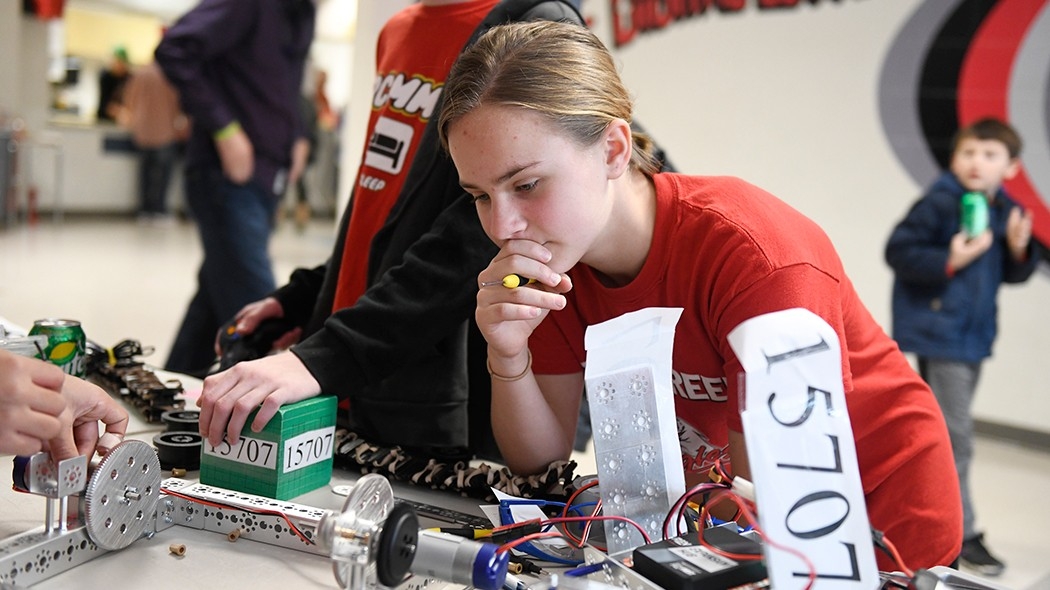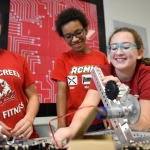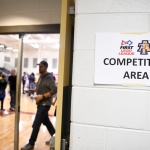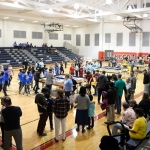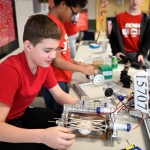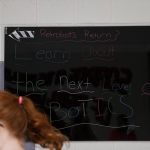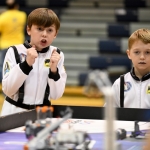Dylan Ducatte was not really enamored with science or technology lessons prior to middle school. Her experiences in those areas had been, for the most part, mundane and dry.
“I had never had a hands-on opportunity to work [with robotics],” she said.
Through Jan.30, Wake County Public Schools are accepting magnet and year-round school applications for the 2019-20 academic year. For information, visit wcpss.net.
Dylan, though, began to do a 180-degree pivot on those interests when she began attending Reedy Creek Magnet Middle School’s Center for the Digital Sciences as a sixth-grader last year.
She chose to take electives in Reedy Creek’s digital science curriculum, which was implemented in 2016-17. The curriculum was developed with the help of Robert Walker, a computer science professor in Kent State University’s School of Digital Sciences, which is one of the collegiate leaders in this discipline.
Because of the unique nature of the curriculum, Reedy Creek is the only digital sciences middle school in the country, according to school officials.
“I was surprised by how much I enjoyed it actually, the first year I did it. I noticed that I was developing a passion for getting hands on,” said Dylan, who expects to work with drones in her eighth-grade elective next year and then work with robotics or software and hardware applications in high school.
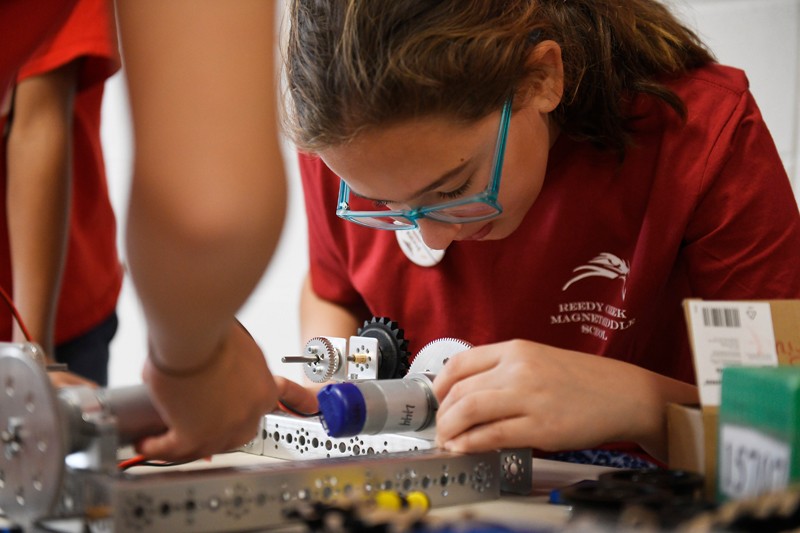
Aileen Roorda works on her team’s robot at Reedy Creek. Aileen is part of the First Tech Challenge Robotics Team at the middle school.
She is not alone.
In each of the five digital science electives, sixth- through eighth-grade students learn about evolving technology through hands-on experience. The middle-schoolers work collaboratively and creatively to solve problems.
“If you look at where we are in society today, with what’s going on with technology in general, the jobs that are going to be out there in those career fields, the application of what the students are learning now, is almost going to be mandatory,” said Reedy Creek principal Trent Evans. “The thing is, [technology] is so cutting edge that we’re trying to stay ahead of the curve, which is difficult when you don’t know what’s around the curve.
“You try and expose them to as many different components as possible. From there, it either takes off if they truly have that passion for it, or it could be like taking an art class. You got exposed to it ,and you might have a stronger interest somewhere else, but at least you have that knowledge. With technology as global as it is, it’s good to have that exposure, even if they don’t pursue that as a career path.”
What started as a robotics-based curriculum three years ago now features three levels of mechatronics — the combination of mechanical engineering and electronics — at its core. In entry-level Mechatronics, Reedy Creek students learn and apply the fundamentals of robot operation and programming by using electrical concepts and components. By Mechatronics 3, students are beginning to study biomedical engineering and drone technology.
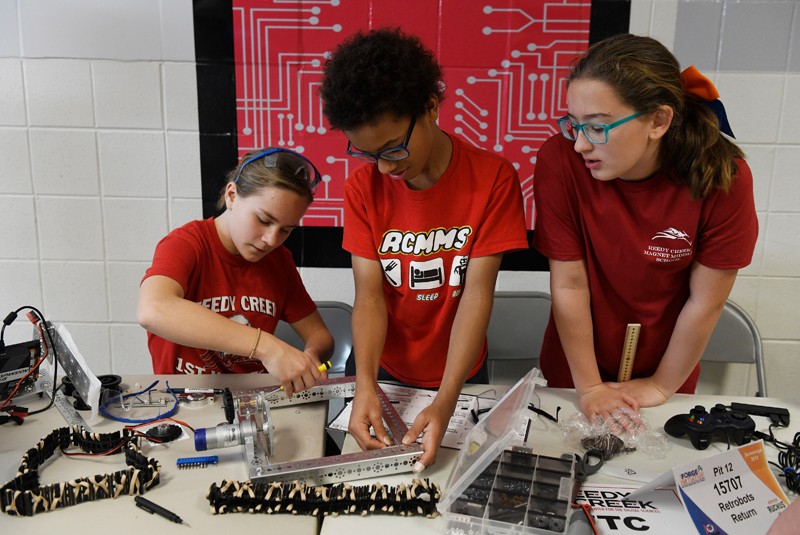
Dylan Ducatte, left, Borys Kowalczyk, center, and Aileen Roorda, members of the First Tech Challenge Robotics Team at Reedy Creek, work on their robot. The middle school has a unique digital science curriculum that gives students hands-on experience solving technology problems.
Other digital technology electives offered by the school are Bits and Bytes, which provides a broad overview of technology, and Emerging Technologies, which focuses on the ever-changing nature of the field.
Reedy Creek, thanks in part to teachers Ron Boehm and Luke Wieszczyk, has managed to keep its curriculum fluid and fresh. Wieszczyk says adding mechatronics has allowed the school to make its program more robust.
“We started talking about halfway through last year about how we could make the curriculum better, because our students move so fast,” he said. “The students this year versus last year are way more excited about what we are teaching. It moves a lot quicker, and they’re a lot busier. They seem to appreciate that.”
Reedy Creek also benefits from its ties to Triangle universities and businesses. In 2017, N.C. State researchers introduced the entire student body to the basics of coding. Also, as part of a local outreach program, Deutsche Bank Global Technology assigned team projects to Reedy Creek digital science students. Project managers from the company guided the student teams as they created presentations for company executives.
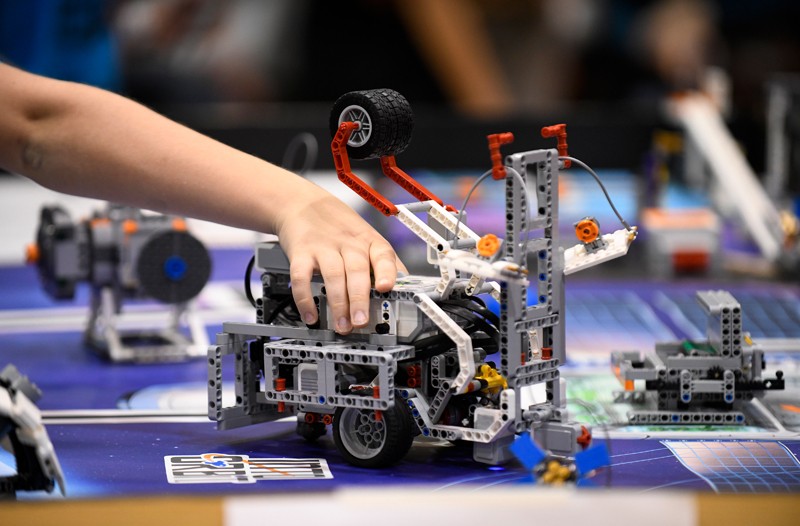
During First Lego League competitions, youngsters need to solve a mission with the help of a robot. Teams build and program their robots ahead of time, and during the tournament, the robots must perform timed tasks.
“I am amazed at how advanced these students are in their studies of technologies,” said Amit Rahalkar, a program manager with DB Global Technology who helps coordinate the company’s area outreach programs. “It’s encouraging to see that these students are not only being exposed to these fields at such an early age, but they are able to cope and comprehend them.”
Evans stresses that students with a penchant for technology are not one dimensional.
“It’s important for us to include the arts and not just become so focused on the technology that we forget the other aspects of what it means to be in middle school,” said Evans, who added that music, art and drama complement the tech side.
“The importance to that is making sure our students understand the importance of communication, collaboration, creativity,” he said. “If I’m asking you to design something for me, I need to articulate that very clearly. But as the designer, you need to be able to fully understand what I am saying to you.”
Evans says roughly 400 students per year take a mechatronics class. Add to that nearly 150 who are in the Bits and Bytes and Emerging Technologies classes, and nearly half of the school is exposed to the digital sciences curriculum. Enrollment overall is on the rise. In 2015-16, enrollment was in the low 800s, and figures for the 2018-19 year show enrollment is slightly more than 1,000 students.
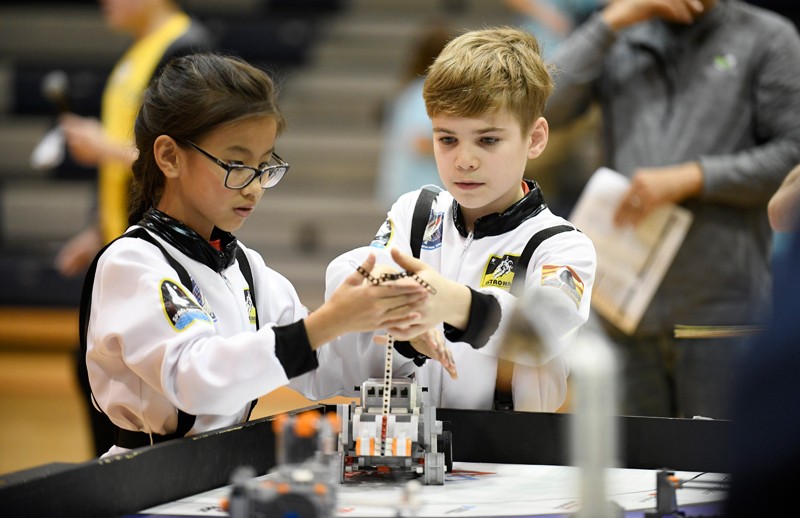
Students Khani Lyan, left, and Daniil Peretrutov change out components of their robot during the First Lego League competition at Reedy Creek Middle School.
“We’re seeing [the technology curriculum] light a spark in many students, and hopefully they will continue on into college and possibly a career,” said Boehm.
That spark has fired up students like seventh-grader Laran Melvin. She has always been a tinkerer, taking items apart and putting them back together, but she never envisioned a career in technology.
“When I was younger I knew about robotics, but I thought, ‘I am not going to be able to do anything with that.’ But now I know how to code and [solve problems],” she said. “I definitely want to become a mechanical engineer in a field that is related to robots.”
- 2019 Maggy Awards: Services
- 2019 Maggy Awards: Restaurants
- 2019 Maggy Awards: Shopping
- 2019 Maggy Awards: Lifestyle
- Exam Room to Legislative Floor
- Hands On
- The Early Spring of Winter Honeysuckle
- Cary’s SideBar: Classic with a Twist
- Liquid Assets: Acorn Brown Ale from Jordan Lake Brewing Company
- Liquid Assets: Oak City Amaretto
- Picture Perfect!
- Sorghum-Spiked Challah French Toast from Postmaster
- Tobacco Road Marathon
- From the Editor: January 2019



